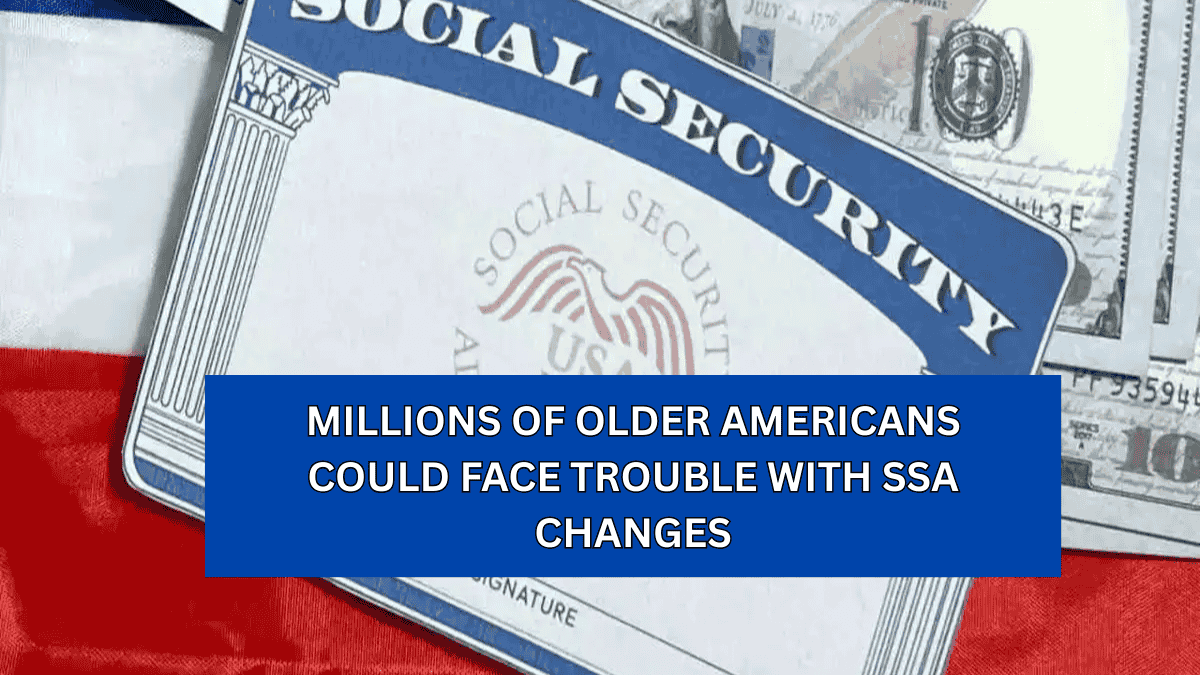Social Security Administration (SSA) rolled out a sweeping new identity-verification rule. The policy alters how seniors and other beneficiaries can access services by phone.
While the agency says the shift is needed to reduce fraud, advocacy groups warn the changes could make life harder for millions of older Americans, especially those without reliable internet access or easy transportation to SSA offices.
What’s Changing The Core of the Policy
Under the new policy, SSA has restricted phone-based verification for benefit services.
Previously, seniors could complete almost all benefit updates, such as changing a bank account or applying for survivor benefits, entirely over the phone. Now:
- Identity must be verified online through a my Social Security account, or
- Completed in person at an SSA field office.
Phone verification is allowed only if fraud-detection tools do not flag the request. If the system marks the case as “high risk,” beneficiaries must appear in person or go online.
When & Where It Applies
- March 31, 2025: The rules applied to most benefit applications.
- April 14, 2025: Direct deposit changes also fell under the new requirements.
- Nationwide: The policy applies across all U.S. states and territories.
This timeline means seniors across the country now face the same restrictions, regardless of whether they live in large metro areas or rural counties with limited SSA office access.
Who’s Impacted A Closer Look
The groups most at risk are:
- Seniors without internet access – Millions of older adults do not own smartphones or broadband connections.
- People with limited mobility – Many struggle with travel due to health conditions or disabilities.
- Rural residents – Some live 50–100 miles from the nearest SSA field office.
- Low-income seniors – Many cannot afford tech devices or transportation costs.
- Those who rely solely on Social Security – Delays could leave them unable to cover essentials like rent or medication.
Analysts estimate the changes could force 2–3 million more in-person office visits annually, adding strain to an already stretched system.
Why It Matters The Rationale
The SSA argues the changes are necessary to combat fraud. Traditional phone security relied on asking personal questions such as old addresses or family details. Unfortunately, much of this information is now widely available on the dark web through data breaches.
By requiring digital or in-person verification, SSA says it can protect beneficiaries from identity theft.
However, critics argue the rollout was rushed, with little time for seniors to adapt. They also note that SSA is simultaneously facing:
- 12% workforce cuts
- Office closures in several states
- Rising call wait times, often exceeding one hour
This means seniors are being pushed toward in-person visits, but with fewer staff and offices available to assist them.
How It Works Step by Step
- Direct Deposit Changes
- Beneficiaries log into my Social Security.
- They generate a one-time PIN code.
- The code must be used on the phone call with SSA.
- Those unable to go online must appear in person.
- Benefit Applications
- Applications can still begin over the phone.
- If the request is “flagged,” the applicant must go to an SSA office.
- Exemptions
- Medicare, SSDI, and SSI applicants can still complete verification by phone.
- This exemption recognizes the greater vulnerability of these groups.
Key Facts at a Glance
| Key Fact | Details |
|---|---|
| Effective Dates | March 31 (applications), April 14 (deposits), 2025 |
| Verification Methods | Online via my Social Security or in person at SSA offices |
| Phone Allowed? | Only if no fraud flag is triggered |
| Most Affected Groups | Seniors without internet, rural residents, disabled or mobility-limited |
| SSA Staffing | ~12% workforce cuts, longer wait times, multiple office closures |
Conclusion
This policy marks a major shift in how Social Security services are delivered. While the government emphasizes fraud prevention, millions of seniors could face new barriers:
- Longer wait times at SSA offices
- Costly travel for rural seniors
- Delayed access to benefits for those who cannot verify quickly
- Increased stress for vulnerable groups who rely on Social Security as their only income
Experts say SSA should balance security with accessibility. Suggestions include mobile verification units, community-based partnerships, and extending exemptions for rural seniors.
Unless modifications are made, the new rules could unintentionally leave some of America’s most vulnerable without timely support.
FAQ,s
1. Can seniors still verify identity by phone?
Yes, but only if their request is not flagged as high-risk. Otherwise, in-person or online verification is mandatory.
2. Are Medicare, SSDI, and SSI applicants exempt?
Yes. These groups can still complete their applications entirely by phone.
3. How do I change my direct deposit now?
You must log into my Social Security to generate a PIN or visit a field office. Phone-only changes are no longer allowed in most cases.
4. Why is SSA ending phone verification?
Because fraudsters often exploited knowledge-based questions. In-person and online verification are more secure.
5. What if I live far from a field office?
You may face hardship. Advocates recommend seeking help from AARP or senior centers, which may provide transport or digital assistance.
Nand Kishor is a content writer covering business, economy, and world affairs. With a background in journalism, he focuses on clear, ethical, and insightful reporting. Outside of work, he enjoys chess, cricket, and writing short stories.
